I replaced the pads & discs on my Altea this morning, so took some photos while doing it. Here's the process from start to finish. The setup will no doubt be the same as the Golf-Jetta Mk5.
First up, the news pads & discs. I priced them from the local motor factors at just over £52 for some anonymous Chinese stuff, then a price from Euro Car Parts online for ATE brand at £77 delivered. Then I went to Trade Parts Specialist (TPS) and got genuine VAG parts for a shade under £70.00 (a good move in my opinion, and I'll tell you why later). TPS are VAGs own parts network so they're spot on for part numbers and prices.
So, first up, jack the car and remove the rear wheel. If you need help with this part then stop reading now and take your car to a garage. Someone else borrowed my axle stands and good jack last week so I'm using my small jack and an improvised axle stand.
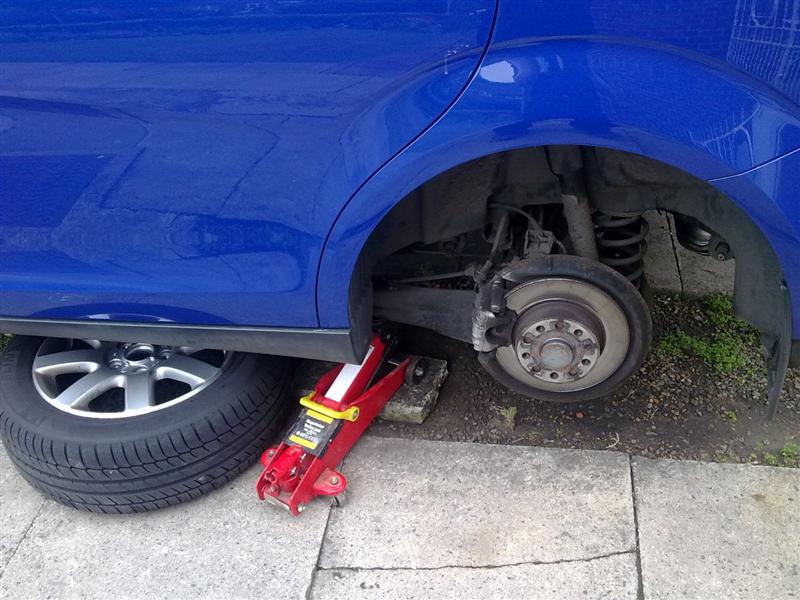
The basics...
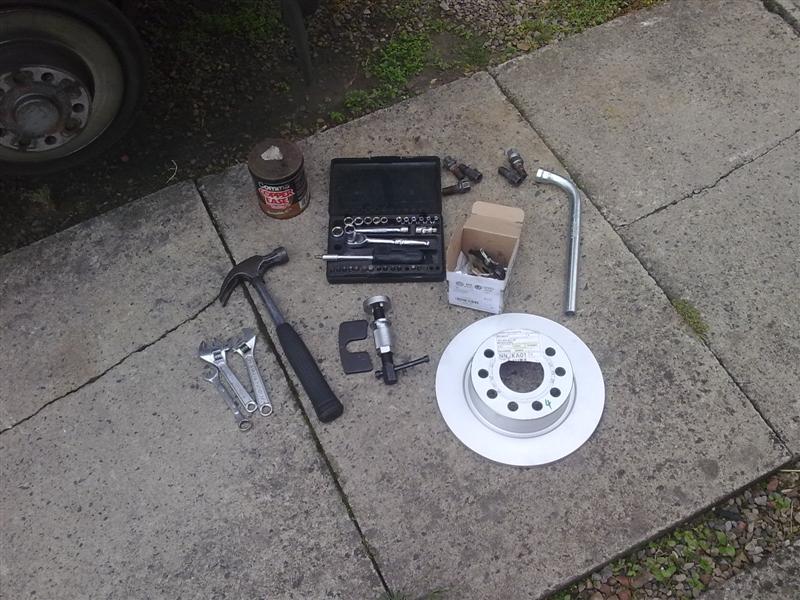
The new pads & disc...
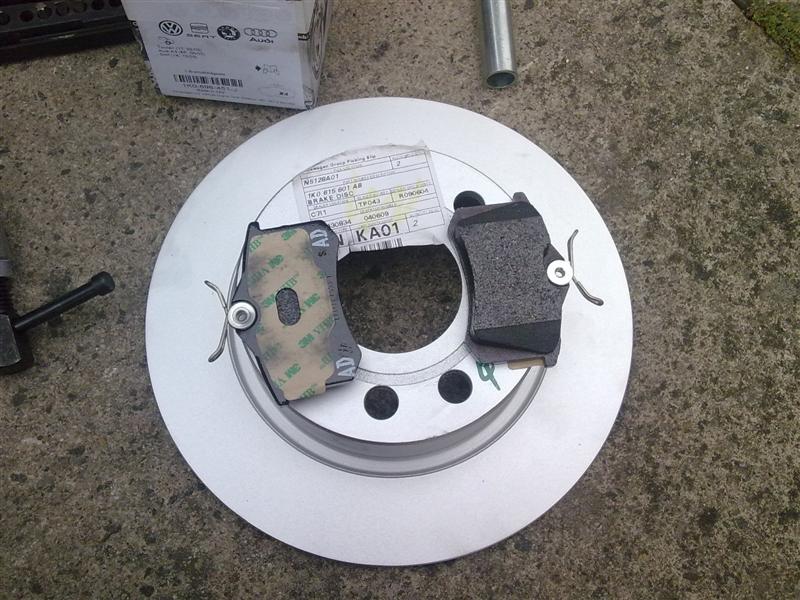
And the old ones. These are just about as far as I dare go, but still 20k miles since the dealers told me they were shot and needed replacing.
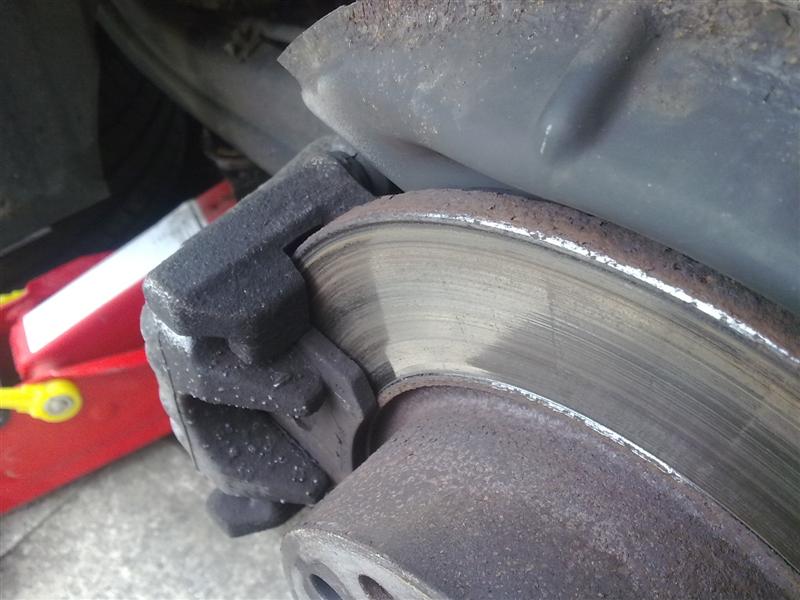
The caliper, and a couple of arrows pointing to the 2 bolts you need to undo.
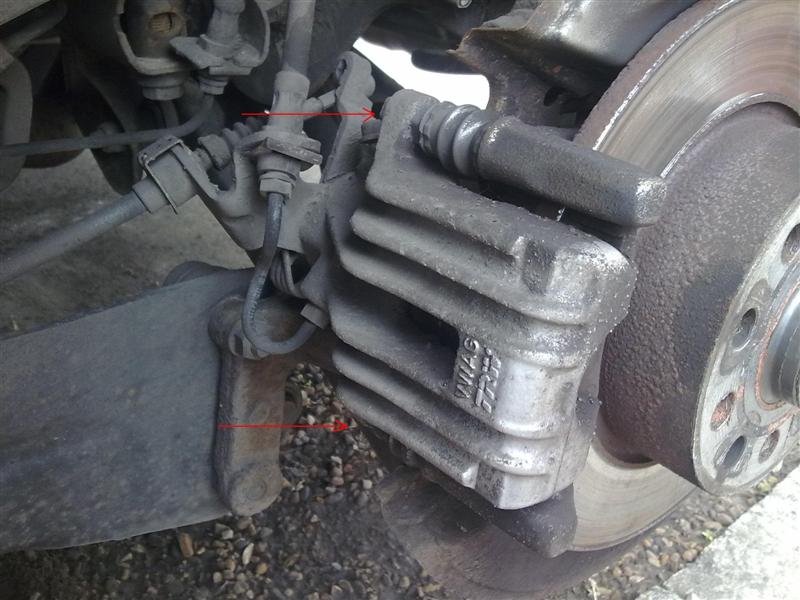
You need a 13mm spanner to undo the carrier bolts, and they're tight. I used an old spanner and tapped it with a hammer to loosen. Standard thread so they just come off the same way as any old bolt.
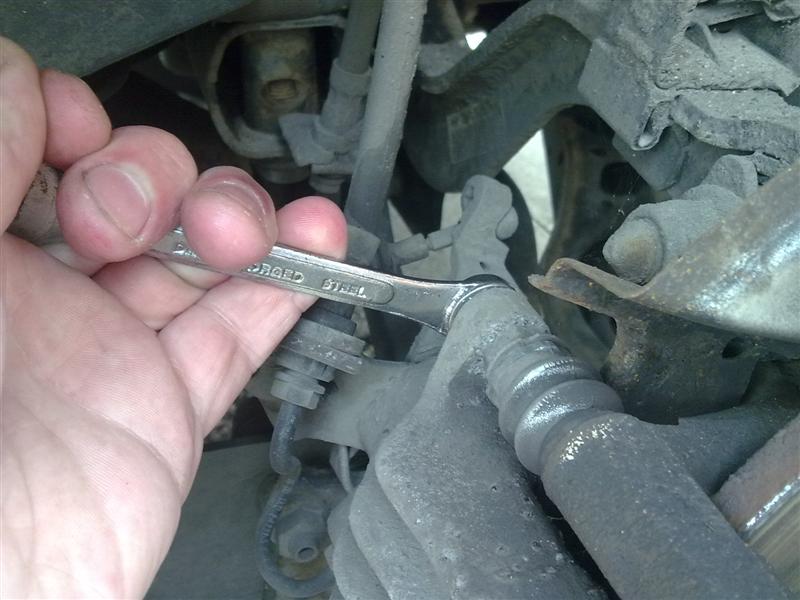
Then when you've got it shifted you need a second spanner (14mm this time)* as shown to hold the guide pin and stop it turning. I've lost my 14mm, so had to use a rough arsed adjustable.
*Might even be a 15mm
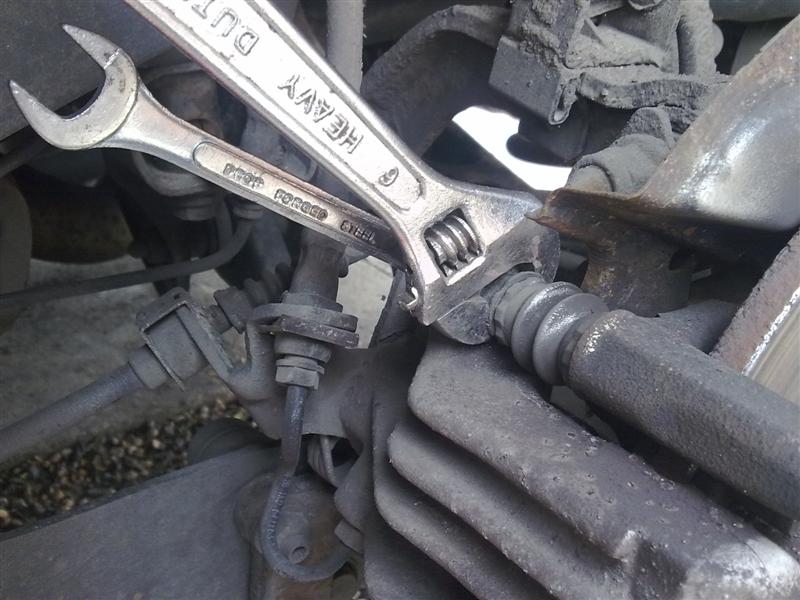
Once you've got it loosened, the bolt pulls out.
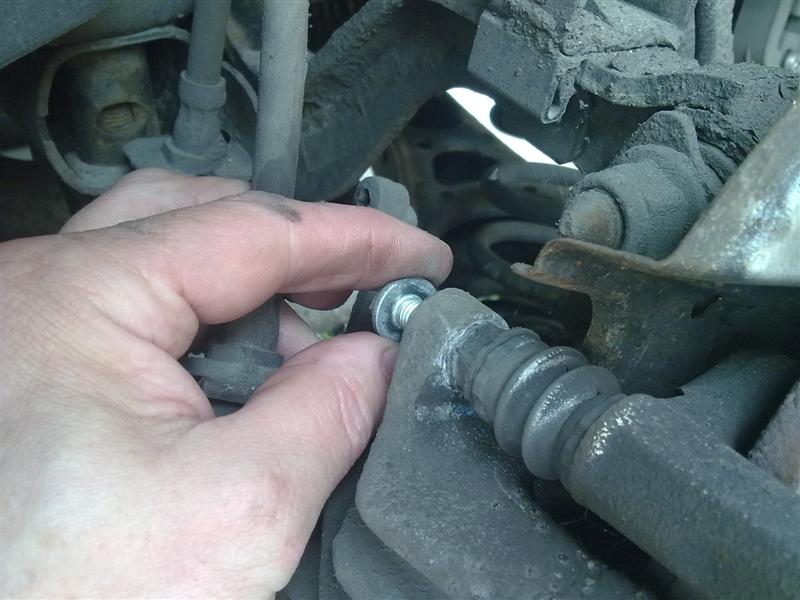
Then the same procedure on the bottom carrier bolt. Again, tapping the spanner to loosen it.
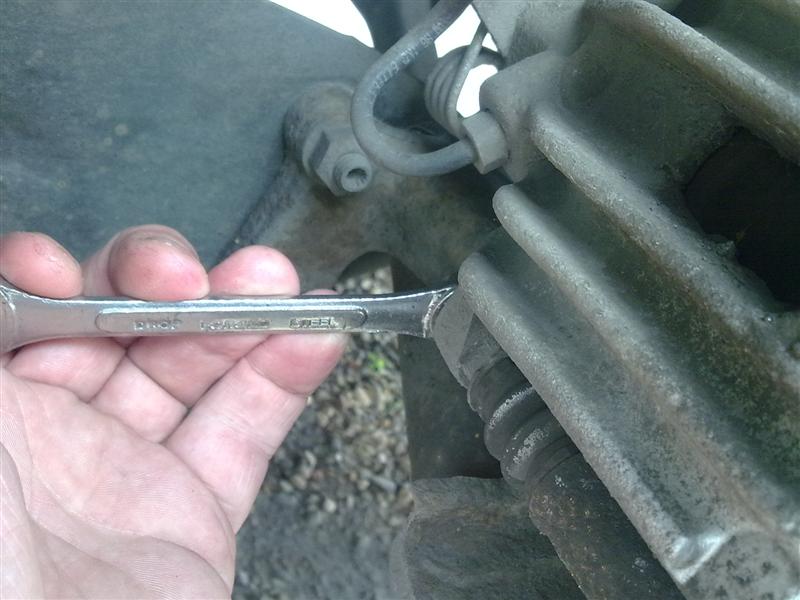
Then the second spanner to hold the guide pin again.
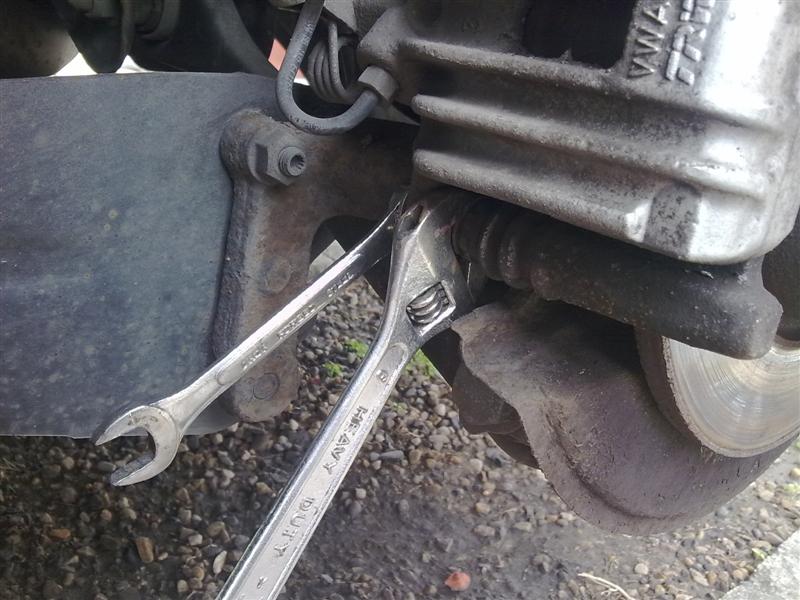
Reached the image maximum, so next post will continue from here.
First up, the news pads & discs. I priced them from the local motor factors at just over £52 for some anonymous Chinese stuff, then a price from Euro Car Parts online for ATE brand at £77 delivered. Then I went to Trade Parts Specialist (TPS) and got genuine VAG parts for a shade under £70.00 (a good move in my opinion, and I'll tell you why later). TPS are VAGs own parts network so they're spot on for part numbers and prices.
So, first up, jack the car and remove the rear wheel. If you need help with this part then stop reading now and take your car to a garage. Someone else borrowed my axle stands and good jack last week so I'm using my small jack and an improvised axle stand.

The basics...

The new pads & disc...

And the old ones. These are just about as far as I dare go, but still 20k miles since the dealers told me they were shot and needed replacing.

The caliper, and a couple of arrows pointing to the 2 bolts you need to undo.

You need a 13mm spanner to undo the carrier bolts, and they're tight. I used an old spanner and tapped it with a hammer to loosen. Standard thread so they just come off the same way as any old bolt.

Then when you've got it shifted you need a second spanner (14mm this time)* as shown to hold the guide pin and stop it turning. I've lost my 14mm, so had to use a rough arsed adjustable.
*Might even be a 15mm

Once you've got it loosened, the bolt pulls out.

Then the same procedure on the bottom carrier bolt. Again, tapping the spanner to loosen it.

Then the second spanner to hold the guide pin again.

Reached the image maximum, so next post will continue from here.
Last edited:


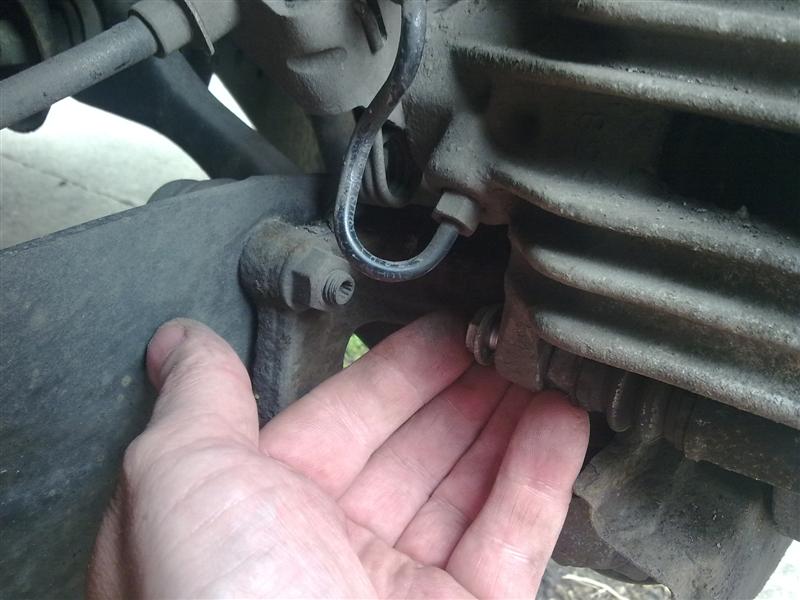
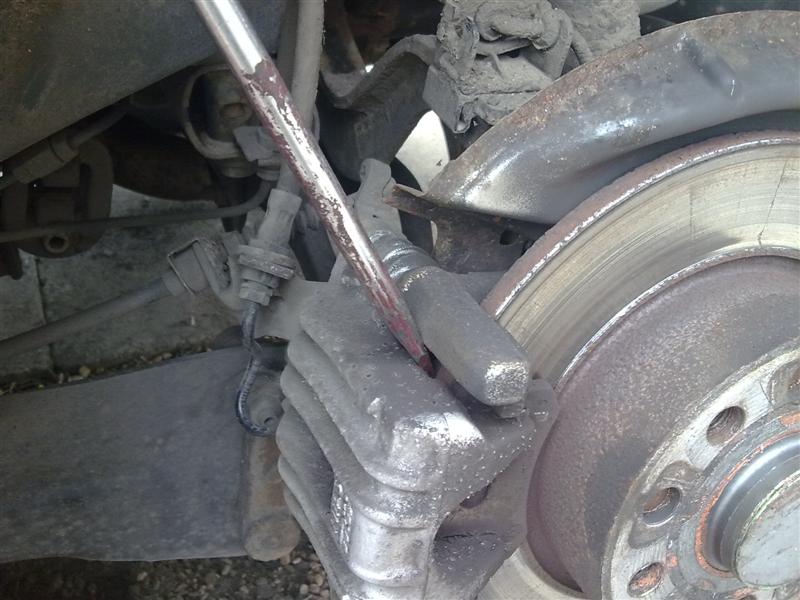
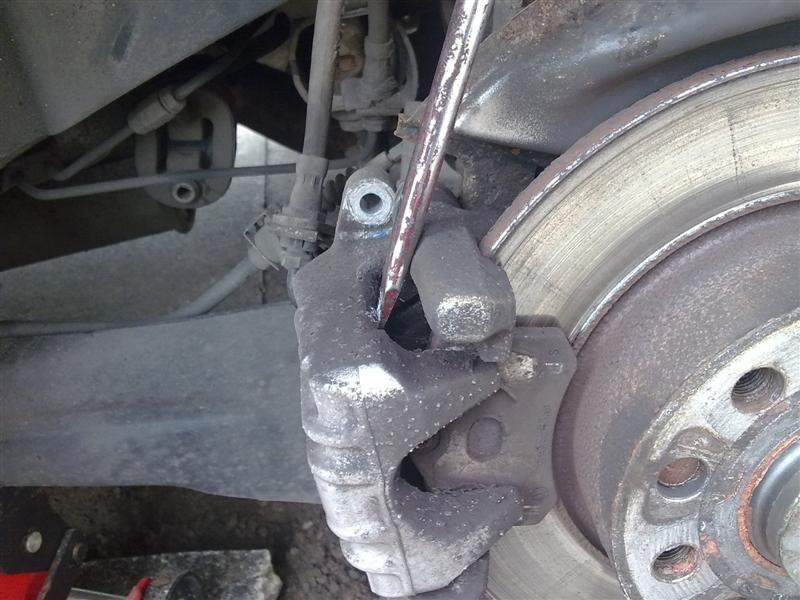
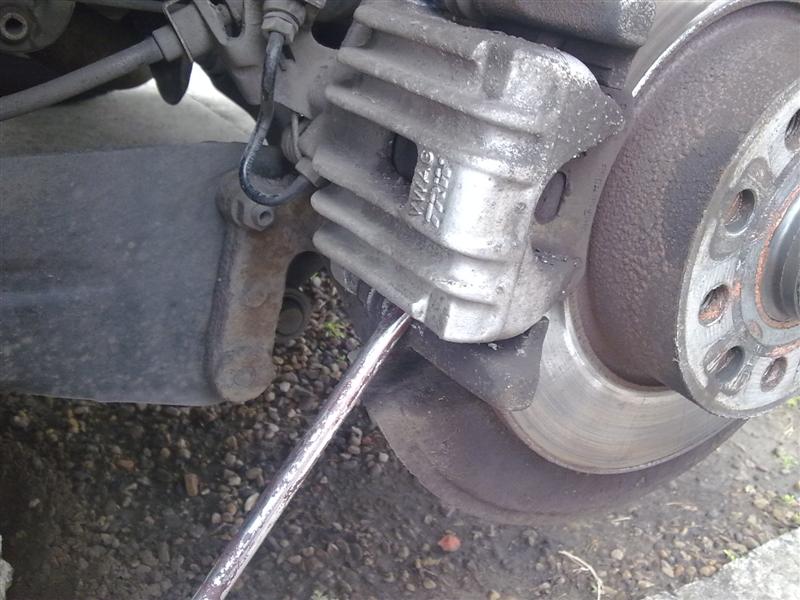
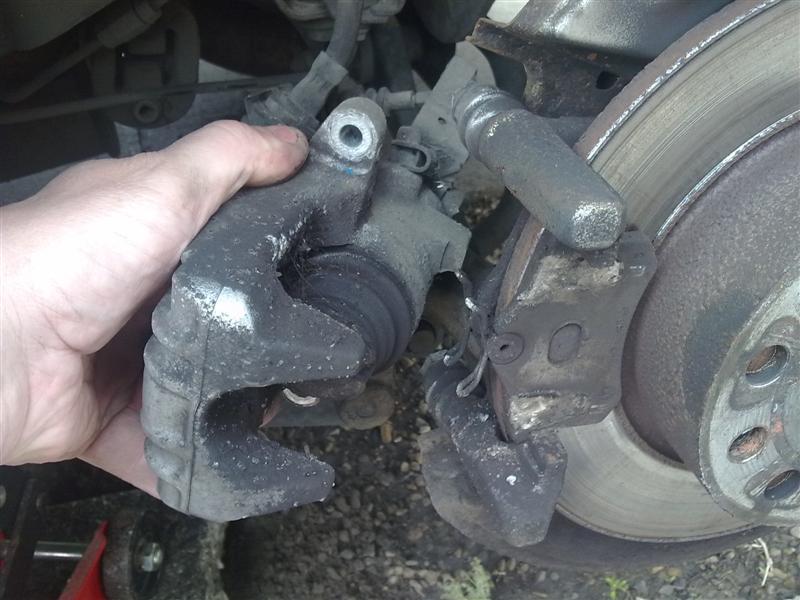
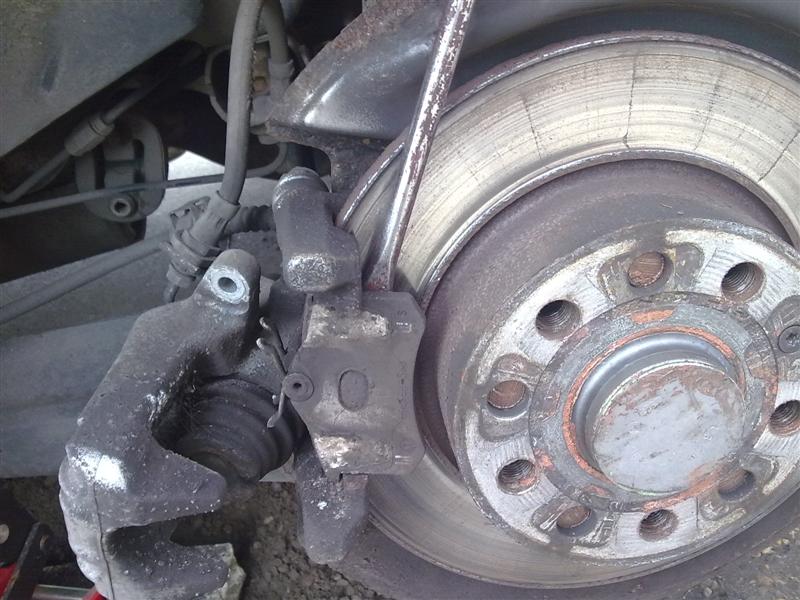
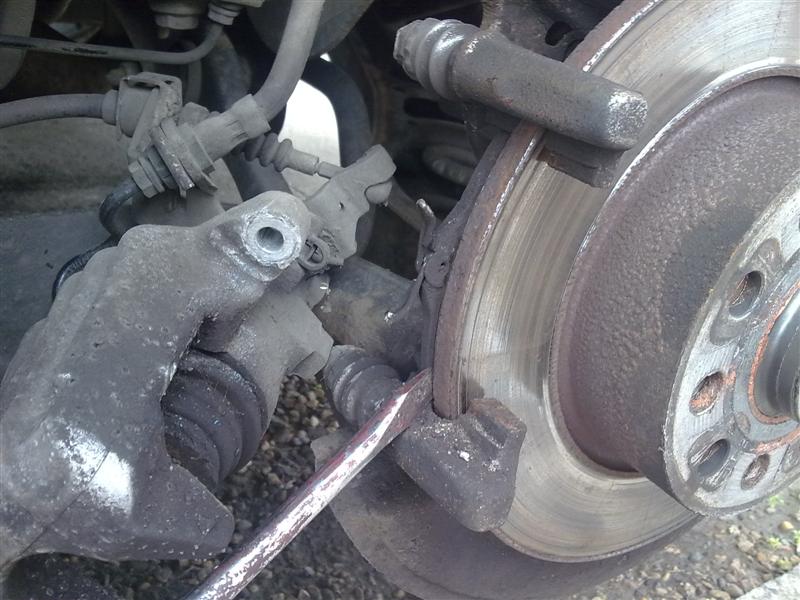
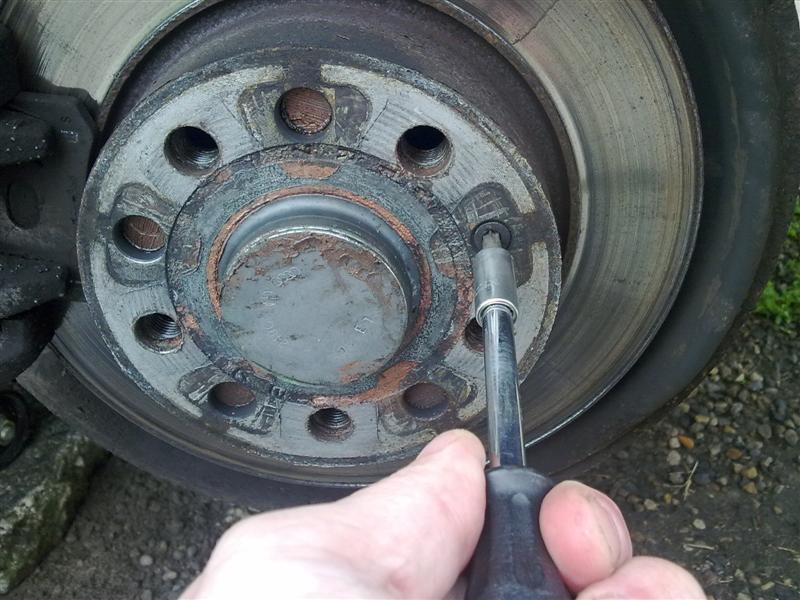
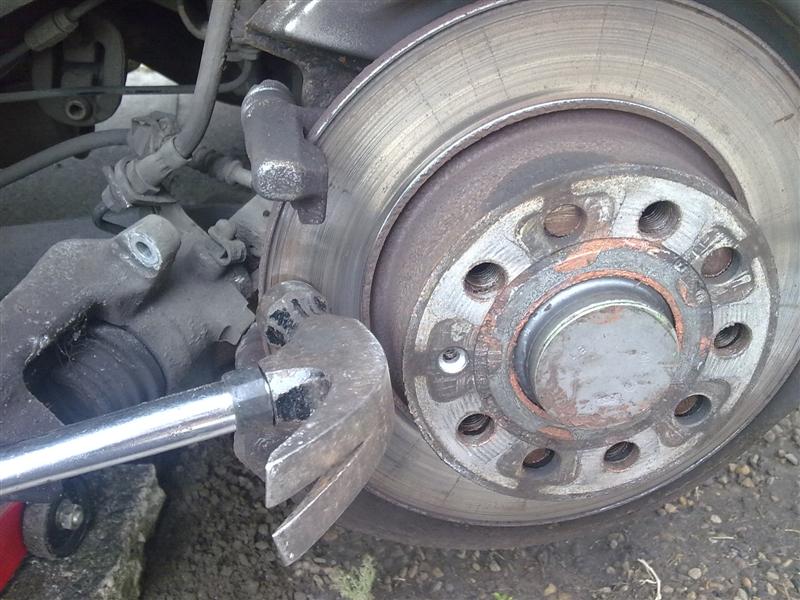
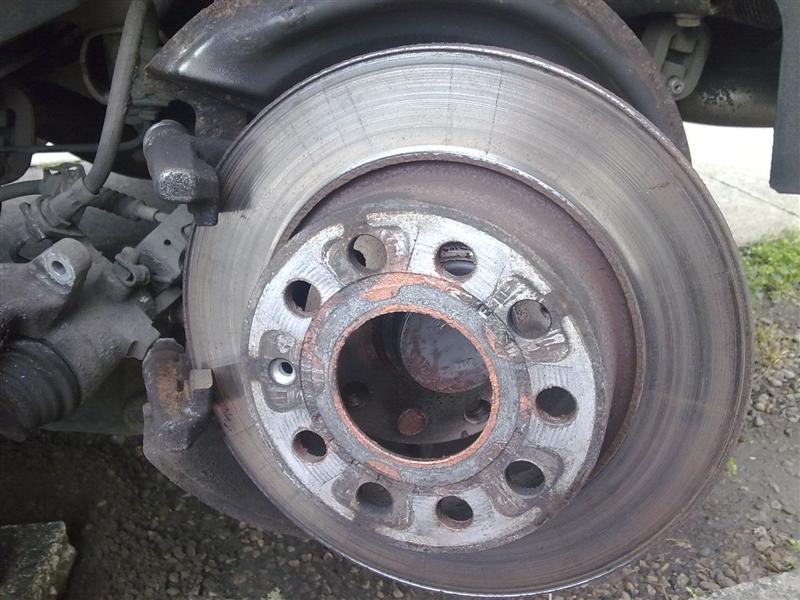
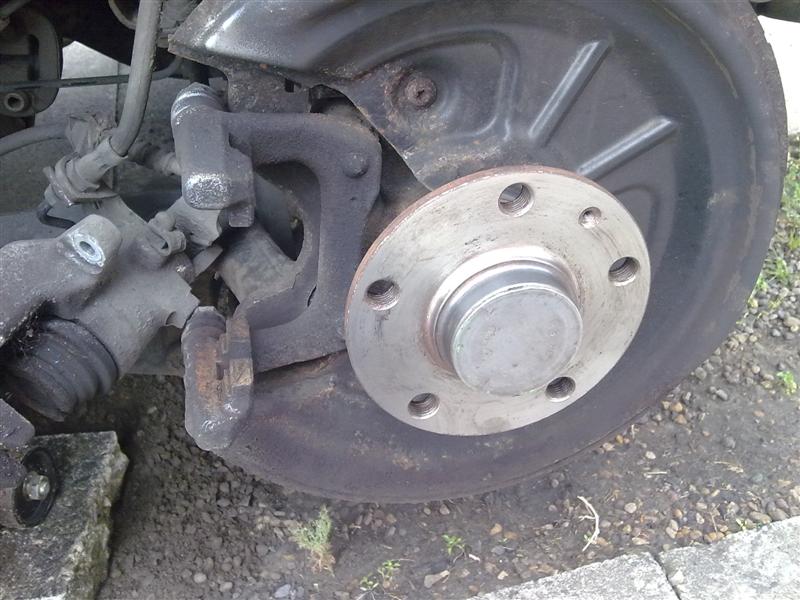
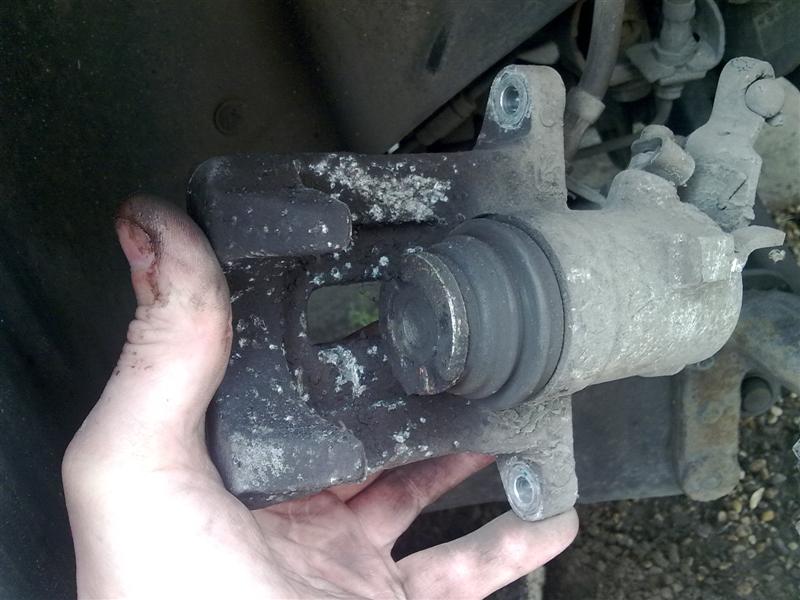
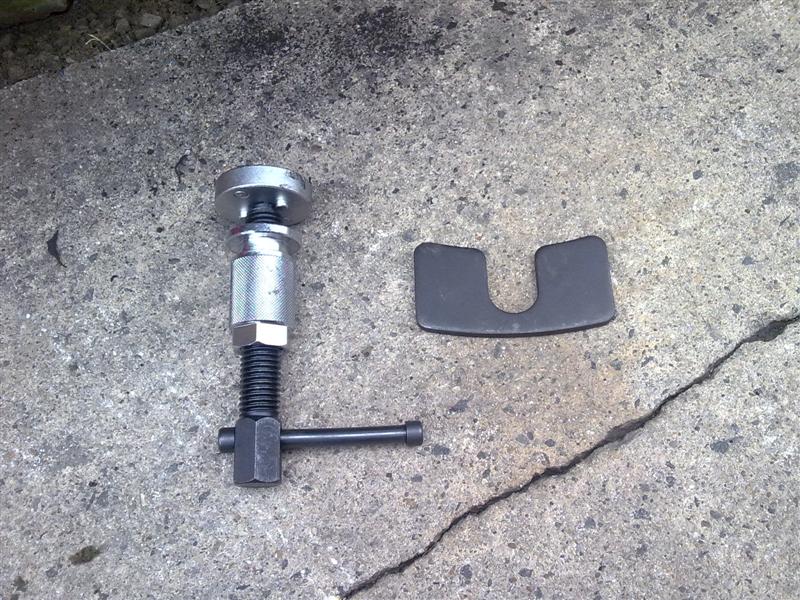
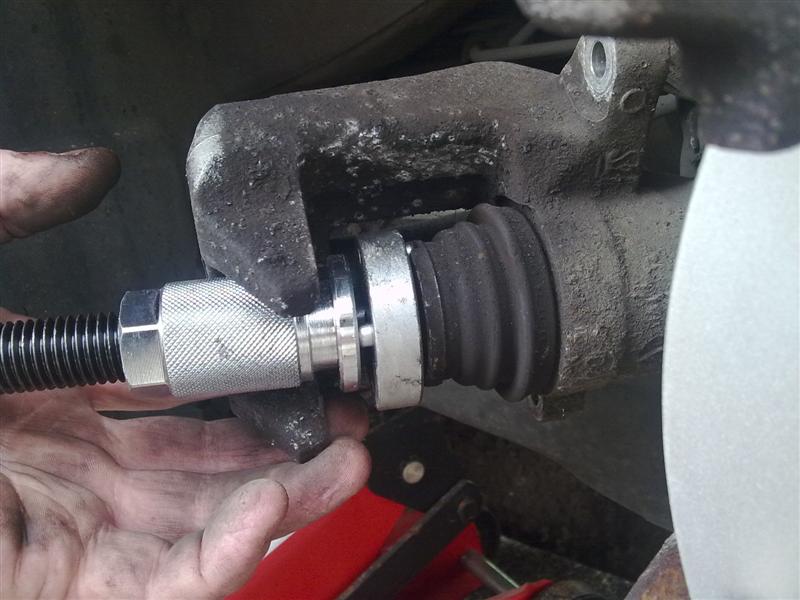
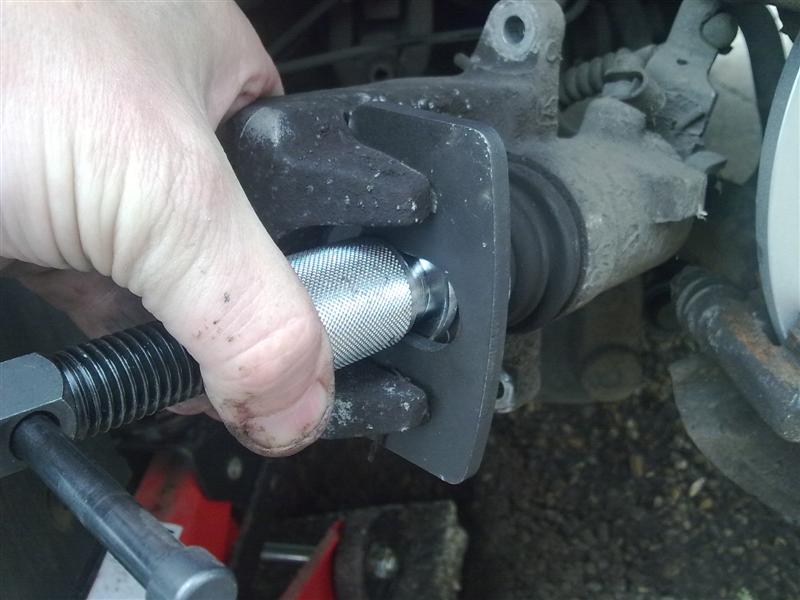
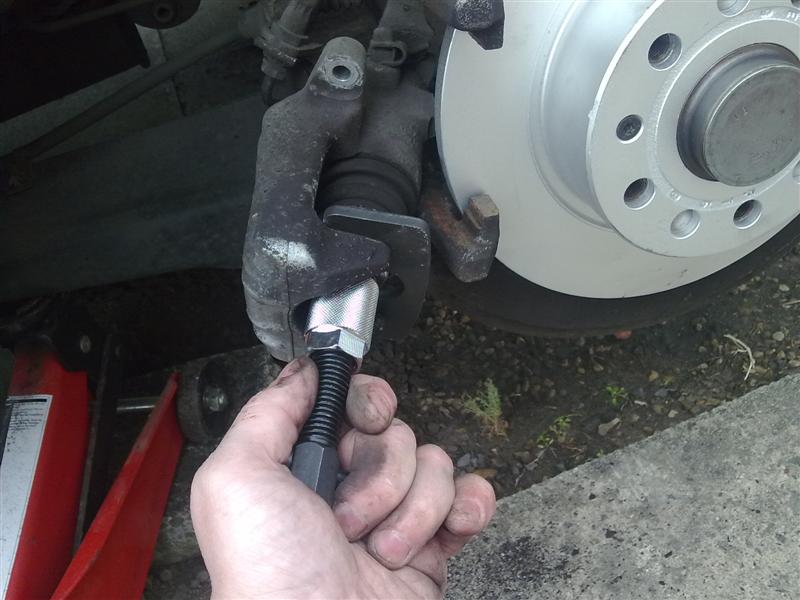
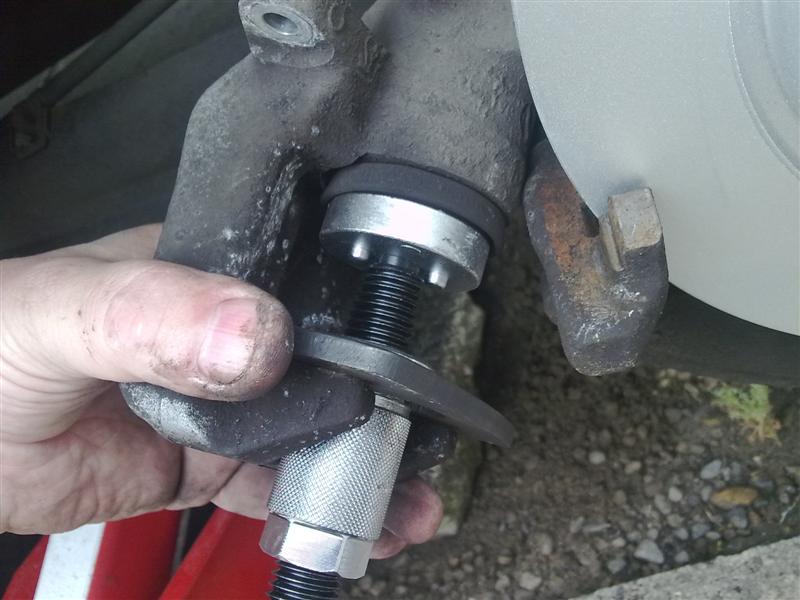
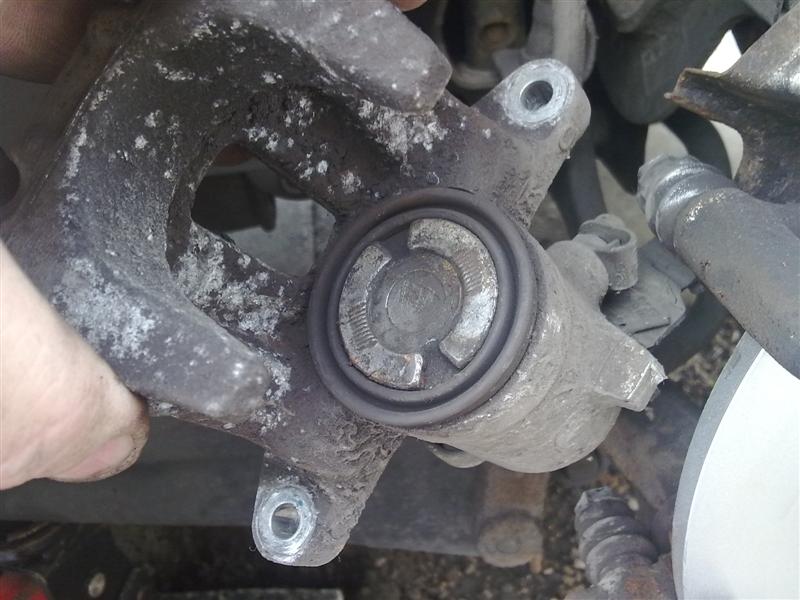
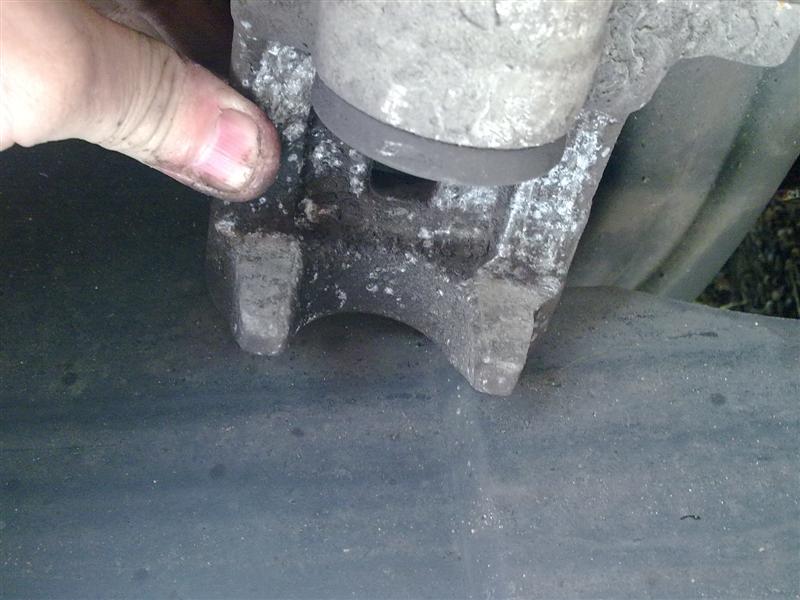
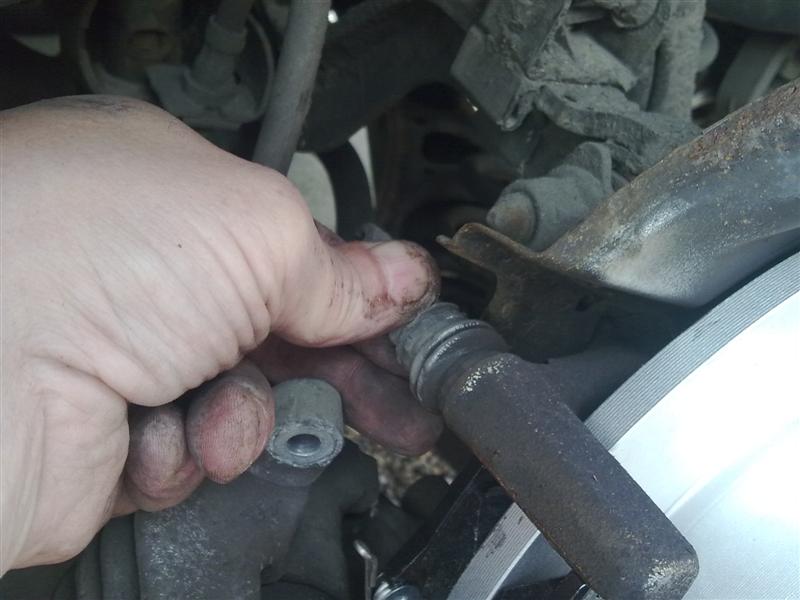
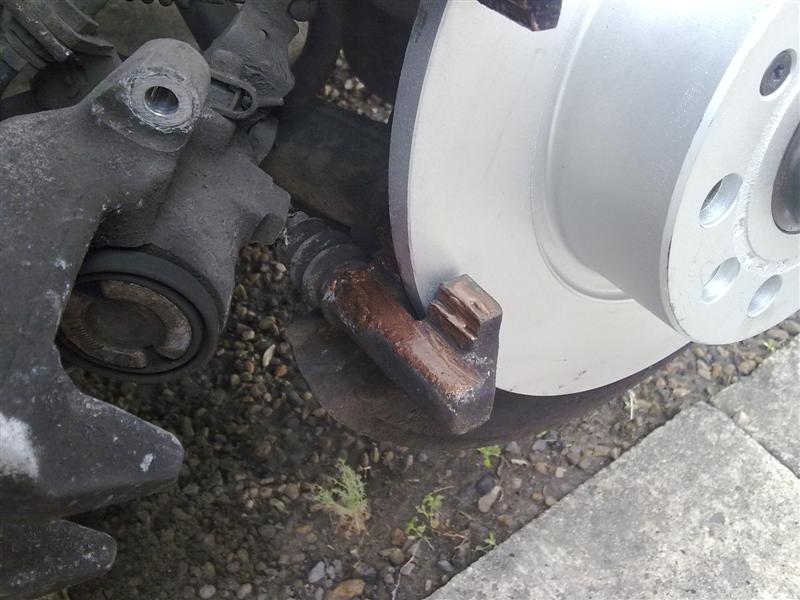
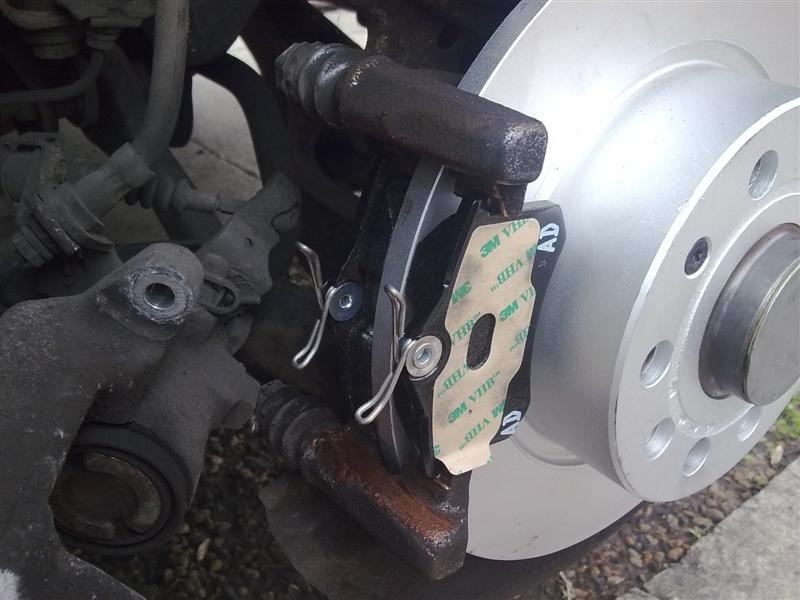
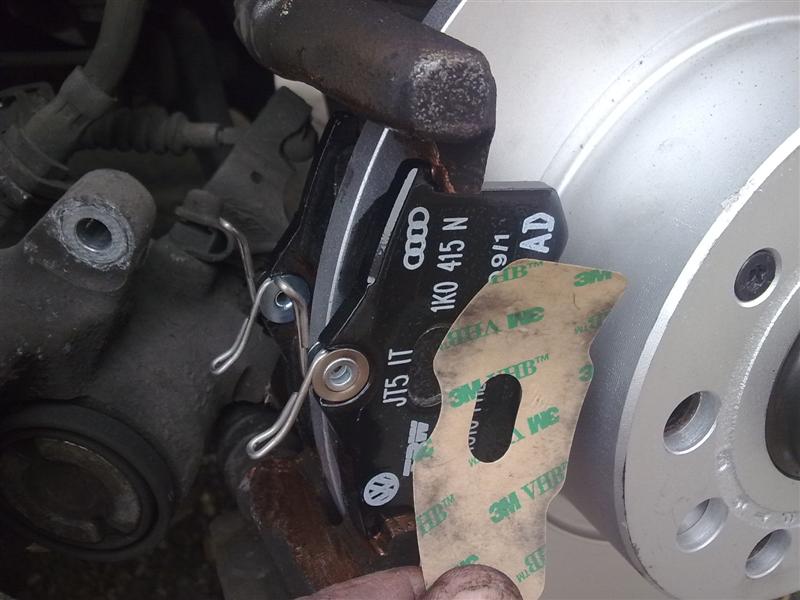
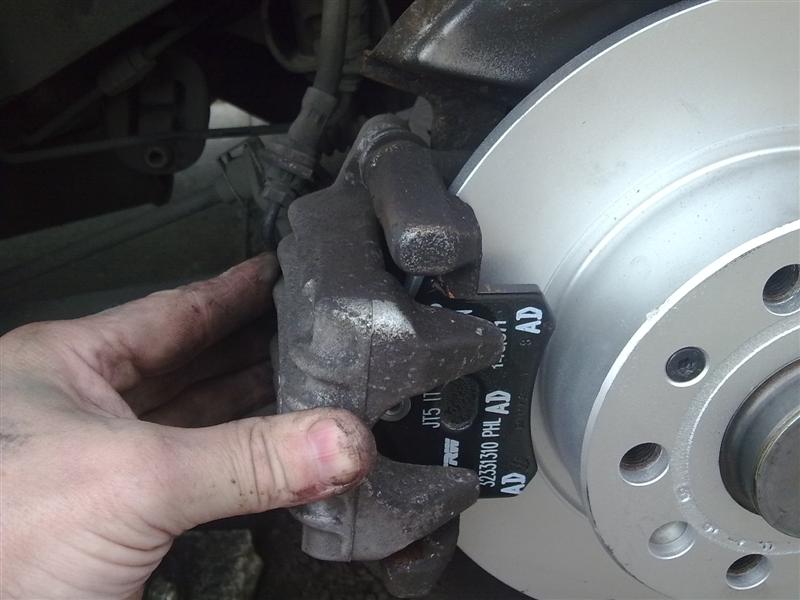
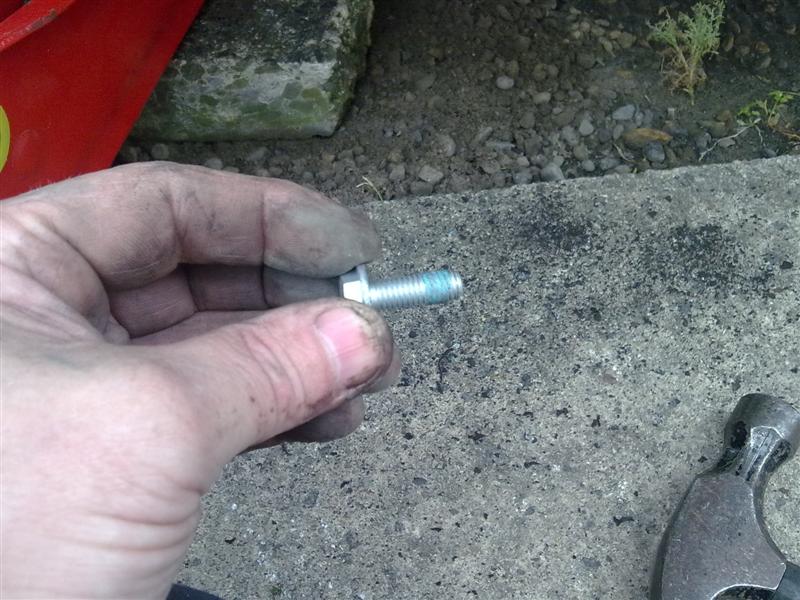
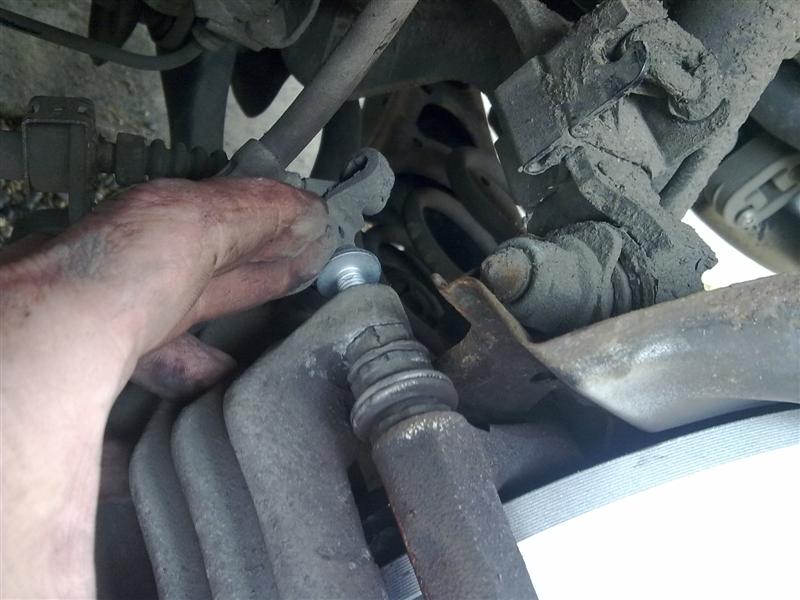
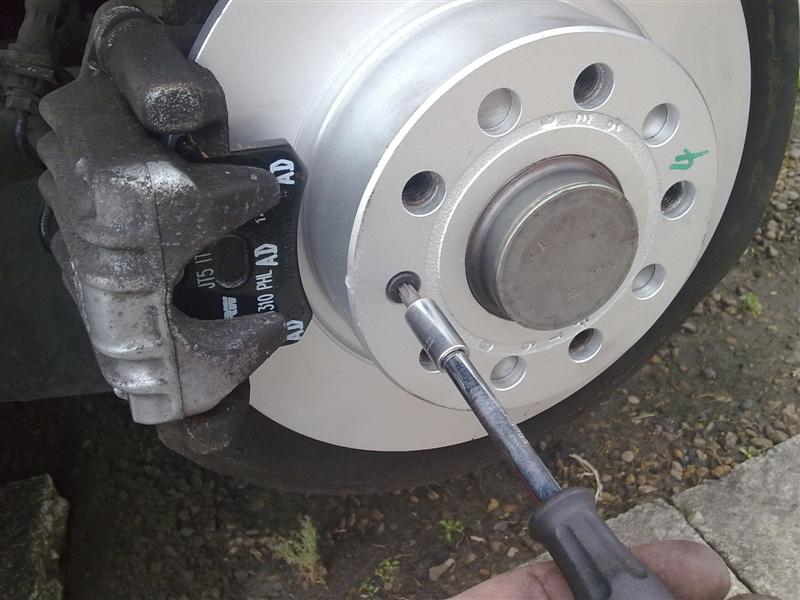
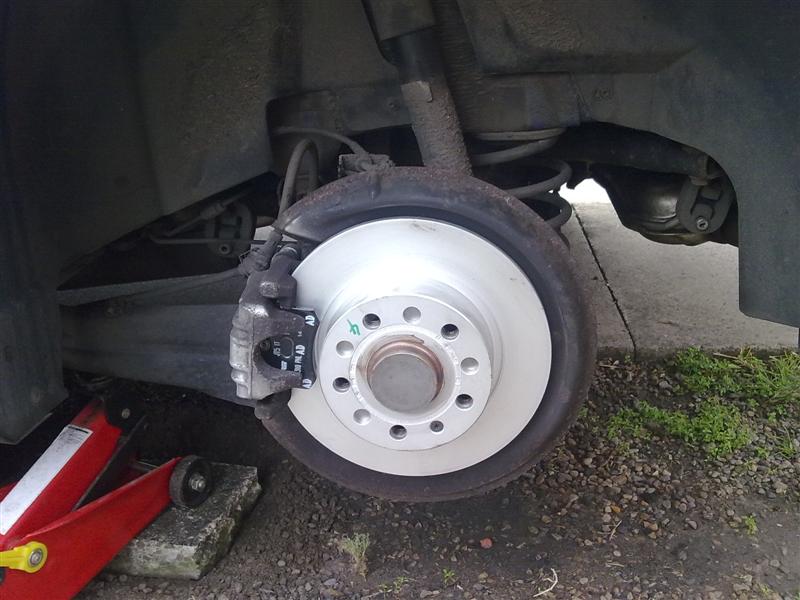

 Thanks, great
Thanks, great 
